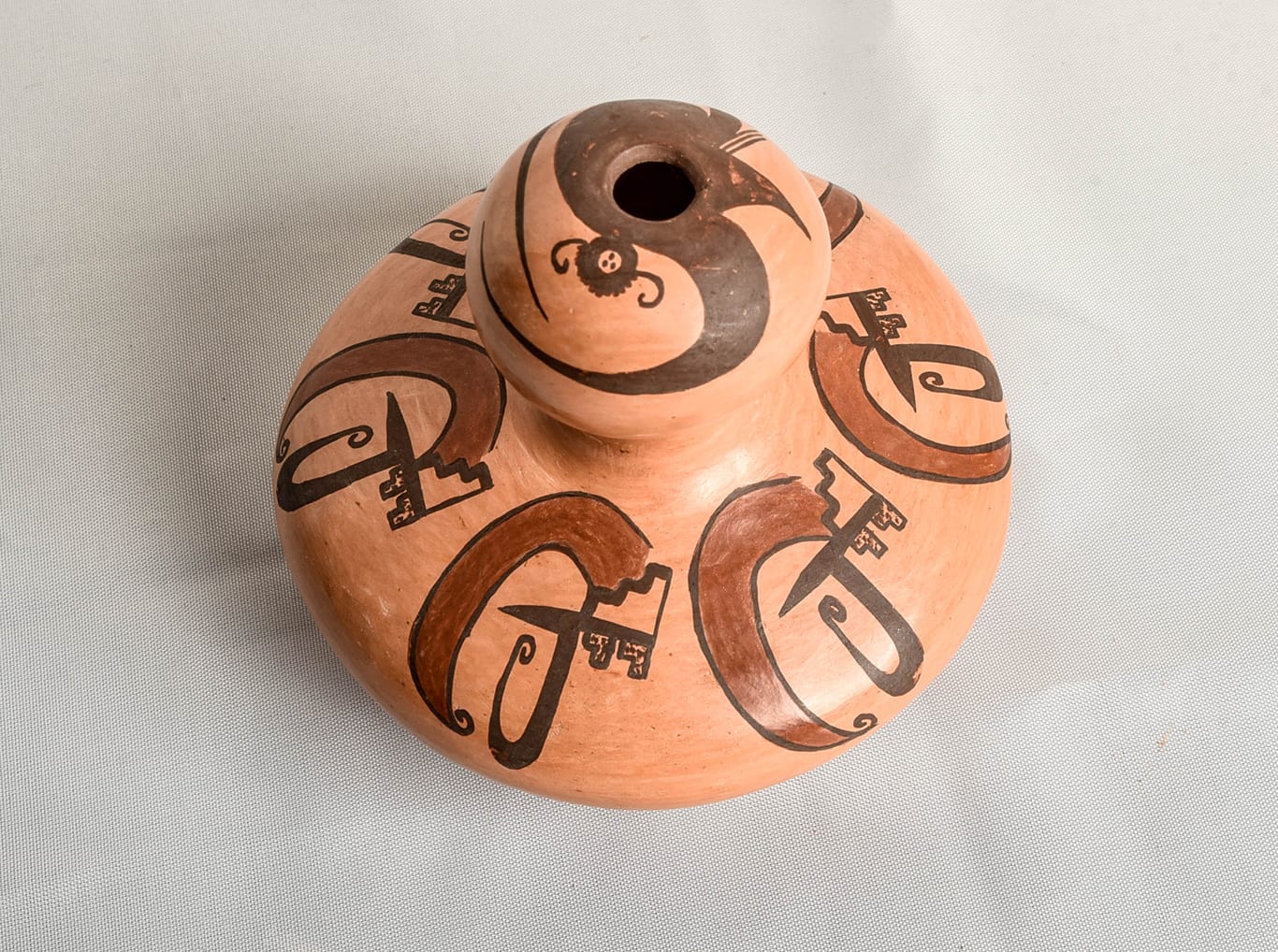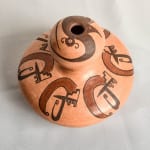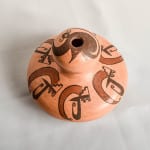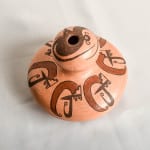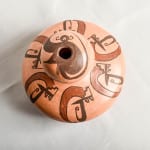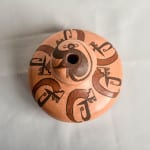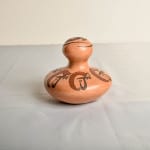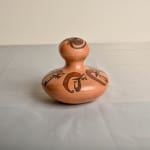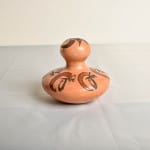Jar 2015-09 features a narrow waist that almost divides the vessel in two and results in a round ball-shaped top resting on a wide-shouldered bottom. It’s an unusual and dramatic shape. Given the small opening, one supposes that the top and bottom were fabricated separately and then joined together. The jar is evenly blushed from its outdoor firing.
Gourds seem to have provided a model for early southwestern ceramics (Holmes, 1886:446), but there is only one other gourd-shaped vessel in this collection (1989-05).
The design on this jar seems unique; I know of no other examples. On the wide shoulder of the lower half, a pattern is repeated six times. A curved red crescent outlined in black sweeps down on the left side, ending in a black curlicue. To its left is a black form that looks like a ship’s anchor. Stepped cloud elements and another curlicue elaborate the basic black form. Others have suggested this is an abstracted image of Kokopelli with a red hunched back playing a black flute. That’s not how I see it, but each eye is welcome to its own image. Though busy, the pattern energizes the eye.
Around the small opening on top the jar is a black form with sweeping limbs that curve back over each other. I see this as a spider with two encircling legs and a small, fuzzy doughnut-shaped head with eyes, mouth and ears. Her body has both bulbous and pointed form and three strands of hair. Perhaps she is trying to attract prey into her jar- mouth lair. Nampeyo occasionally drew an unexpected whimsy figure on her pots (Kramer, 1996:155, plate 17) and it seems Randy was moved by a similar spirit.

